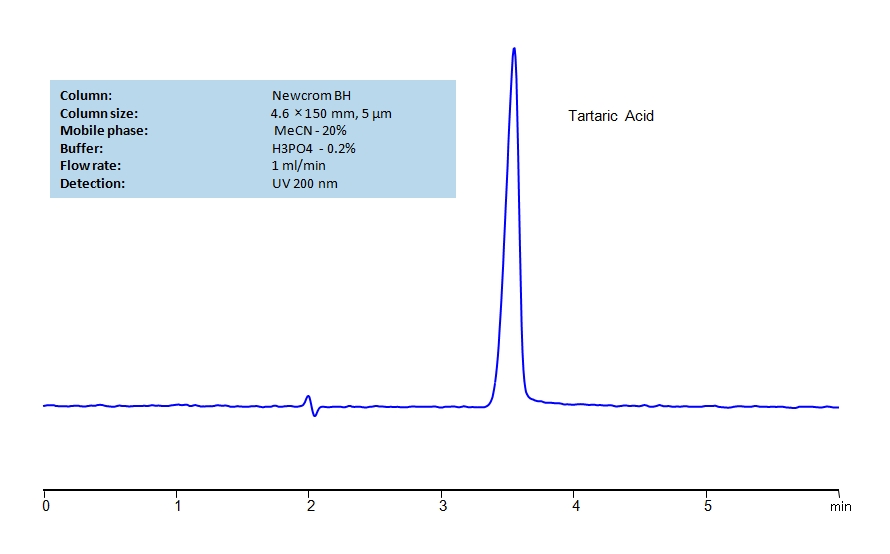HPLC Method for Tartaric Acid on Newcrom BH by SIELC Technologies
High Performance Liquid Chromatography (HPLC) Method for Analysis of Tartaric Acid.
Tartaric acid is a naturally occurring organic acid that is found in many plants, particularly in grapes and tamarinds. It’s known for its sour taste and antioxidant properties. Chemically, tartaric acid is a white, crystalline organic acid. It has the chemical formula C4H6O6.
Tartaric acid has been used in winemaking for centuries because it plays a key role in the fermentation process. It’s also used in baking powder, where it serves as a leavening agent.
In addition to these culinary uses, tartaric acid is used in the manufacturing of effervescent salts, in combination with citric acid, to improve taste and make a fizz. It’s also found in some of the very effective rust removal and cleaning solutions.
Tartaric acid is used in cream of tartar (potassium bitartrate), which is used in cooking and baking. It can also be found in a variety of other foods, including soft drinks, fruit juices, candies, and ice cream.
Like other acids, tartaric acid can be hazardous in large quantities, and it should always be handled and stored appropriately. Always refer to the safety data sheet for this substance and follow the recommended safety guidelines.
Tartaric Acid can be retained and analyzed using the Newcrom BH stationary phase column. The analysis utilizes an isocratic method with a simple mobile phase consisting of water and acetonitrile (MeCN) with a phosphoric acid buffer. Detection is performed using UV.
Condition
| Column | Newcrom BH, 4.6 x 150 mm, 5 µm, 100 A, dual ended |
| Mobile Phase | MeCN/H2O – 20/80% |
| Buffer | H3PO4 – 0.2% |
| Flow Rate | 1.0 ml/min |
| Detection | UV 200 nm |
| Class of Compounds | Acid, Hydrophilic |
| Analyzing Compounds | Tartaric Acid |
Application Column
Newcrom BH
Column Diameter: 4.6 mm
Column Length: 150 mm
Particle Size: 5 µm
Pore Size: 100 A
Column options: dual ended






